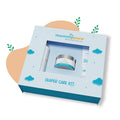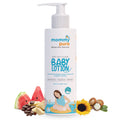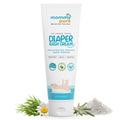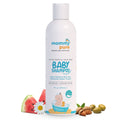Nosocomial infections in newborns: How to prevent them?

The word ‘Nosocomial' is derived from two Greek words: Nosus which means “disease” and “komeion” meaning “to take care of”. Broadly, it can be defined as any infection that is contracted by a patient in a place where he is taken care of- the healthcare facility. Hence, Nosocomial infections are hospital-acquired infections.
The most worrisome aspect of this infection other than the increased hospital bill is the survival threat. The infections result in increased morbidity and mortality and moreover affect neurodevelopment. The threat of these infections is pronounced in premature infants, very low birth weight babies, and newborns with critical conditions or surgical intervention. The reasons behind their susceptibility to infections are due to immature immune systems and weak defense mechanisms. Since such a group of newborns is already dependent on ventilators, IV catheters, respiratory support, feeding tubes, urinary catheters, the infection transmission gets easy and imposes a high risk to their recovery. Also, the long hospital stay of the newborn in the NICU (neonatal intensive Care Units) or surgical procedures that prolong the duration increases the chances of exposure to such infections. The pathogens involved in such infections could be bacteria, fungi, and viruses.
Diagnosing factors
- The infection occurs 3 days post-hospitalization or 3 days post-discharge
- The infection occurs 30 days post-operation
- Admission was for reasons other than infection
The commonest nosocomial infections presentation is
- Pneumonia-infection related to the lungs
- Conjunctivitis
- Bacteraemia-infections in blood passed on through a vein cannula (IV medicine/fluid)
- Others- skin infections which are common in full-term and caused by Staphylococcus aureus, herpes simplex virus, candida, etc.

The signs and symptoms could be
- Fever
- Rash
- Vomiting
- Poor feeding
- Drowsiness
- Increased sleep
- Swelling and discharge from the skin near IV catheter cannulation
- Hypothermia
- Heavy breathing
- Loose stools
Investigations
The pathological test like blood and urine examination may help understand the causative factor and presence of infection. At times spinal fluid examination may also be indicated.
Prevention
- All caregivers, staff, parents, and visitors should adhere to hospital hygiene protocol strictly before and after handling the newborn,
- Hand Sanitation-Careful handwashing and thorough cleansing by antiseptic soap or liquid wash or a good alcohol preparation proves beneficial in decreasing bacterial colony in the hands.
- Breastfeeding should be promoted as it is simple and an inexpensive measure to reduce infection rates.
- Infection monitoring should be done often in the hospitals.
- The central line, IV cannula, feeding tube, and catheter care should be done by professionals.
- Antibiotics use at sites like an umbilical cord, circumcision site, and nasal areas should be done.
- Proper distancing of newborns from other newborns who are in the incubators.
- All the equipment should be sterilized appropriately and the hospital cleaning should be done meticulously.
- Monitoring the newborn for any signs and symptoms that indicate the nosocomial infection.
- At times prophylactic use of antibiotics to avoid occurrence can be thought of.
- Adequate care and treatment to be provided after investigation confirms the infection.
- Colonization Prevention in ICUs and nurseries should be done as the carriers are mainly the nursery staff, colonized mothers and neonates are the potential sources of infection.

Nosocomial infection control has been a challenging process in view of certain strains that are resistant to antibiotics and limitations to handle them. But a simple yet effective step of following hand hygiene could have a significant positive impact.
Stay safe, Stay sanitized and let all be healthy!
P.N: This article/ blog post from Mommypure is for informational purposes and it doesn’t establish the medical advice. Kindly consult your treating physician for any clarifications. Our main purpose is to educate you all and provide information so that it helps you in the better understanding of the subject matter.
References
https://www.who.int/csr/resources/publications/whocdscsreph200212.pdf
https://www.ncbi.nlm.nih.gov/books/NBK559312/
WHO Guidelines on Hand Hygiene in Health Care: a Summary. http://www.who.int/gpsc/5may/tools/who_guidelines-handhygiene_summary.pdf. Updated: January 1, 2009.










